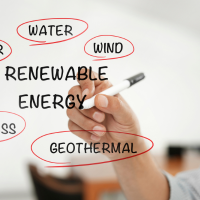The International Union for Conservation of Nature (IUCN) was established in 1948, emerging from a post-World War II context that demanded a new approach to environmental stewardship. The founding of the IUCN was driven by a collective recognition of the urgent need to address the degradation of natural resources and the loss of biodiversity, which were becoming increasingly apparent in the aftermath of global conflict. A group of visionary conservationists, scientists, and government representatives convened in Fontainebleau, France, to lay the groundwork for an organization that would unite various stakeholders in the pursuit of sustainable development and conservation.
From its inception, the IUCN aimed to create a platform for collaboration among governments, non-governmental organizations (NGOs), scientists, and local communities. This collaborative spirit was encapsulated in its mission to influence, encourage, and assist societies throughout the world to conserve the integrity and diversity of nature. The IUCN’s founding principles emphasized the importance of scientific research and knowledge-sharing as essential tools for effective conservation.
Over the decades, the organization has evolved into a global authority on environmental issues, playing a pivotal role in shaping international conservation policies and practices.
The Role of the International Union for Conservation of Nature in Global Conservation Efforts
Assessing Species Conservation Status
By categorizing species based on their risk of extinction, the IUCN helps direct funding and resources toward those most in need of protection. This approach enables targeted conservation efforts, increasing the likelihood of successful species preservation.
Promoting Protected Areas
In addition to species assessment, the IUCN plays a crucial role in promoting protected areas as a means of conserving biodiversity. The organization has been instrumental in establishing guidelines for the designation and management of protected areas, which are essential for safeguarding ecosystems and their inhabitants.
Informing Conservation Strategies
Through initiatives like the World Database on Protected Areas, the IUCN provides valuable data that informs conservation strategies and helps countries meet their commitments under international agreements such as the Convention on Biological Diversity. By fostering collaboration among diverse stakeholders, the IUCN enhances the effectiveness of conservation efforts on a global scale, ultimately contributing to a more sustainable future for all species.
Success Stories and Impact of the International Union for Conservation of Nature
The impact of the IUCN can be seen through numerous success stories that highlight its effectiveness in promoting conservation initiatives worldwide. One notable example is the recovery of the Arabian Oryx, which was once considered extinct in the wild. Through concerted efforts led by the IUCN and its partners, including captive breeding programs and habitat restoration projects, this iconic species has made a remarkable comeback.
Today, Arabian Oryx populations are thriving in protected areas across their historical range, demonstrating how targeted conservation strategies can yield positive results. Another significant achievement is the establishment of marine protected areas (MPAs) that have contributed to the recovery of marine biodiversity. The IUCN has been at the forefront of advocating for MPAs as a means to protect vital ocean ecosystems from overfishing, pollution, and climate change.
For instance, the creation of the Papahānaumokuākea Marine National Monument in Hawaii stands as a testament to successful collaboration between indigenous communities, government agencies, and conservation organizations. This vast MPA not only safeguards unique marine life but also honors cultural heritage, showcasing how conservation can intertwine with social values.
Challenges and Controversies Faced by the International Union for Conservation of Nature
Despite its successes, the IUCN faces numerous challenges and controversies that complicate its mission. One significant issue is balancing conservation efforts with local community needs and rights. In some cases, protected areas have been established without adequate consultation with indigenous peoples or local communities, leading to conflicts over land use and resource access.
Critics argue that such top-down approaches can undermine local livelihoods and exacerbate social inequalities. The IUCN has recognized these challenges and is increasingly advocating for inclusive conservation practices that prioritize community engagement and benefit-sharing. Another challenge lies in addressing climate change’s far-reaching impacts on biodiversity.
As global temperatures rise and weather patterns shift, many species face unprecedented threats to their survival. The IUCN has been proactive in integrating climate considerations into its conservation strategies; however, adapting to these changes requires significant resources and collaboration across sectors. The organization must navigate complex political landscapes while advocating for urgent action to mitigate climate change’s effects on ecosystems and species.
The Future of Conservation and the International Union for Conservation of Nature
Looking ahead, the future of conservation will undoubtedly be shaped by ongoing environmental challenges, technological advancements, and evolving societal values. The IUCN is poised to play a pivotal role in this future by continuing to adapt its strategies to address emerging issues such as biodiversity loss, climate change, and sustainable development. One promising avenue is leveraging technology for conservation purposes; innovations such as satellite monitoring and artificial intelligence can enhance data collection and analysis, enabling more effective decision-making.
Moreover, fostering partnerships with diverse stakeholders will be crucial for achieving long-term conservation goals. The IUCN’s collaborative approach positions it well to engage with governments, businesses, and civil society organizations in developing integrated solutions that benefit both people and nature. As public awareness of environmental issues grows, there is an opportunity for the IUCN to mobilize support for ambitious conservation initiatives that resonate with individuals’ values and aspirations.
How Individuals Can Support the International Union for Conservation of Nature
Individuals can play a vital role in supporting the IUCN’s mission through various avenues. One effective way is by becoming informed advocates for conservation issues within their communities. By raising awareness about biodiversity loss and environmental challenges, individuals can inspire others to take action and support initiatives that align with IUCN’s goals.
Engaging in local conservation projects or volunteering with NGOs focused on environmental protection can also amplify individual impact. Financial support is another critical aspect of contributing to the IUCN’s work. Donations or membership contributions can help fund essential research, advocacy efforts, and on-the-ground conservation projects.
Additionally, individuals can participate in campaigns or initiatives organized by the IUCN or its partners, such as tree planting events or wildlife monitoring programs. By actively engaging with these opportunities, individuals not only support global conservation efforts but also foster a sense of community around shared environmental values. In conclusion, the International Union for Conservation of Nature stands as a beacon of hope in an era marked by environmental challenges.
Its founding principles continue to guide its work as it navigates complex issues while striving to protect our planet’s rich biodiversity. Through collaboration, innovation, and community engagement, both individuals and organizations can contribute to a sustainable future where nature thrives alongside humanity.








































